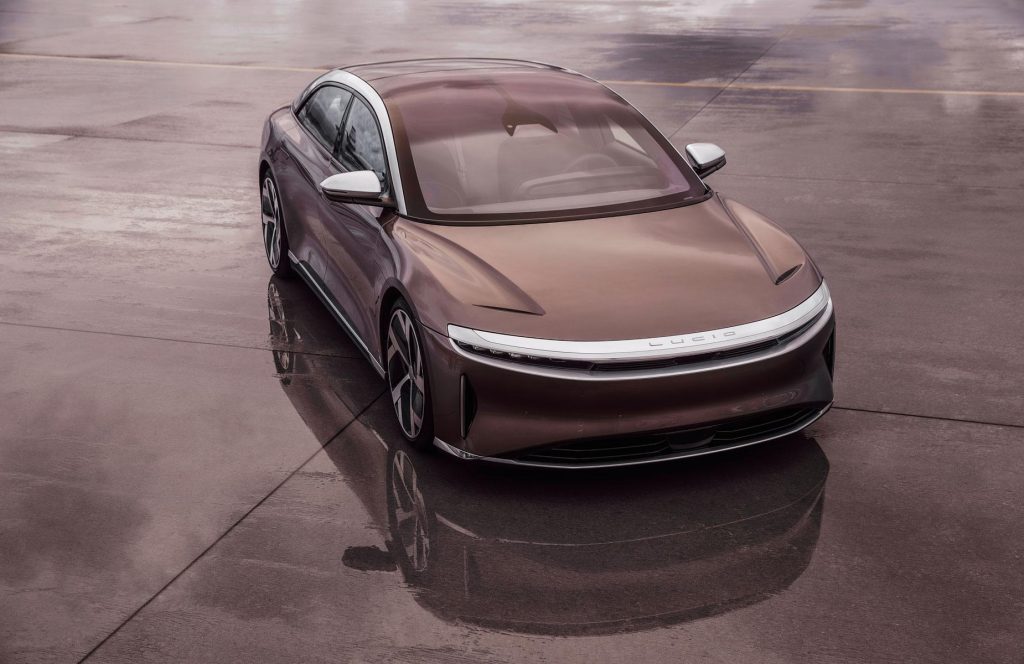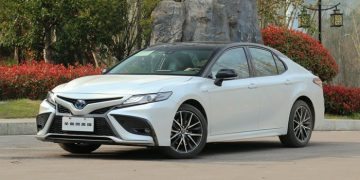Introduction: The Role of Subsidy Policies in the EV Market
Electric vehicles (EVs) are at the forefront of the global transition to sustainable transportation. As governments around the world implement policies to encourage the adoption of EVs, subsidies have emerged as one of the most common tools used to lower the barrier to entry for consumers and promote the growth of the electric vehicle market. However, a critical question remains: Do these subsidies also play a significant role in reducing production costs for automakers, and can they help foster price competition in the EV market?
Subsidies are typically introduced by governments to reduce the financial burden on consumers and manufacturers, making EVs more affordable and accessible. These policies can take many forms, from direct consumer incentives (such as tax credits or rebates) to manufacturer subsidies (including grants, loans, and tax breaks for EV production). While subsidies have certainly contributed to growing EV adoption worldwide, their impact on production costs and price competition is a multifaceted issue that requires deeper examination.
This article delves into the ways in which electric vehicle subsidy policies influence production costs and market dynamics, exploring both the potential benefits and the limitations of these policies in fostering a competitive, cost-effective EV market.
Section 1: The Economics of Electric Vehicle Subsidies
Before assessing the impact of subsidies on production costs and competition, it is important to understand the economic framework in which these policies operate. Subsidies in the EV market can target both consumers and manufacturers, with each serving different economic purposes.
1.1 Consumer Subsidies: Reducing the Financial Barrier to EV Adoption
Government subsidies targeting consumers are designed to lower the upfront cost of purchasing an electric vehicle. These subsidies, often in the form of rebates, tax credits, or grants, make EVs more affordable for buyers, helping to increase demand. For instance, in countries like the United States, China, and Germany, consumers can receive significant tax rebates or subsidies when purchasing an EV.
By making electric vehicles more accessible to a broader range of consumers, these policies encourage higher sales, which in turn can help manufacturers achieve economies of scale. Higher demand and increased production volume generally lead to lower per-unit production costs, creating a virtuous cycle that benefits both manufacturers and consumers. This aspect of subsidies, while not directly lowering production costs, can contribute to reducing unit costs indirectly by stimulating greater production and market penetration.
1.2 Manufacturer Subsidies: Reducing Production Costs and Boosting Innovation
In addition to consumer-focused incentives, many governments provide subsidies directly to manufacturers. These can include tax breaks, grants, loans, and incentives for building manufacturing facilities or investing in new technologies. For example, the U.S. government has provided subsidies for battery manufacturers to develop advanced battery technology, a key component of EV production. By reducing the initial financial burden on manufacturers, these subsidies allow automakers to invest in research and development (R&D), improve manufacturing processes, and reduce the cost of EV components such as batteries, electric motors, and charging systems.
In the short term, subsidies for manufacturers can help to lower production costs, especially for new entrants or smaller manufacturers that lack the capital needed for large-scale production. In the long term, subsidies aimed at improving production efficiency, reducing material costs, and accelerating technological innovation can contribute to cost reductions that are passed on to consumers in the form of lower vehicle prices.
Section 2: Subsidies and Their Impact on EV Production Costs
One of the key concerns with electric vehicle subsidies is whether they truly contribute to a reduction in the underlying production costs for manufacturers. For the EV market to be sustainable in the long run, automakers must be able to produce EVs at competitive prices without relying on government subsidies. This section examines how subsidies impact the costs of EV production and the ways they can help make EVs more cost-competitive.
2.1 Battery Costs: The Biggest Expense in EV Manufacturing
The primary cost driver in the production of electric vehicles is the cost of batteries. Lithium-ion batteries, which are commonly used in EVs, represent a significant portion of an EV’s total cost. Battery prices have traditionally been high due to expensive raw materials (such as lithium, cobalt, and nickel) and the complexity of the manufacturing process.
Subsidies that target battery technology development can help manufacturers reduce these costs. Governments in countries like China, the United States, and Germany have provided significant financial support for battery R&D and the establishment of battery manufacturing plants. For instance, China’s government has heavily subsidized battery manufacturers like CATL and BYD, enabling them to scale up production, reduce battery costs, and improve energy density. As a result, the cost of EV batteries has steadily decreased, helping to lower the overall production cost of electric vehicles.
With lower battery costs, manufacturers can offer more affordable electric vehicles, which is crucial for stimulating consumer demand and achieving mass-market adoption. Furthermore, reduced battery costs allow automakers to compete on price with traditional internal combustion engine (ICE) vehicles, making EVs a viable alternative for a broader range of consumers.
2.2 Economies of Scale: The Long-Term Impact of Subsidies on Production Efficiency
Subsidies, particularly those that encourage the scaling up of production, can help manufacturers achieve economies of scale. As EV manufacturers increase production volumes, they can spread fixed costs (such as research and development, factory setup, and labor) over a larger number of units. This reduction in per-unit cost allows automakers to lower vehicle prices and improve their competitive position in the market.
Subsidies that help manufacturers build larger-scale production facilities or offer incentives for mass production of electric vehicles can thus drive down the average cost of production. For example, Tesla’s Gigafactories benefit from economies of scale, producing vehicles and batteries in large volumes. Tesla has already demonstrated the impact of scaling up EV production, leading to lower costs for consumers and contributing to increased market share.
In the future, as global production volumes rise and manufacturing processes continue to improve, subsidies could help further reduce production costs, leading to price reductions across the board and increased competition among automakers.
2.3 Supply Chain Optimization: Reducing Material Costs
In addition to improving battery technology, subsidies can also help reduce the cost of raw materials used in EV production. Subsidies for mining operations and material sourcing can help ensure a stable supply of critical materials, such as lithium, cobalt, and rare earth metals, which are essential for manufacturing EV batteries. By reducing the volatility in material costs and promoting more efficient supply chains, subsidies can further lower production costs for EV manufacturers.
Governments that incentivize the development of local supply chains for EV production can create a more competitive landscape by ensuring that automakers are not subject to price fluctuations in global commodity markets. This, in turn, can help lower the production costs of EVs and reduce the overall cost gap between EVs and gasoline vehicles.

Section 3: Subsidies and Price Competition in the EV Market
While subsidies can help reduce production costs for manufacturers, they also play a critical role in fostering price competition within the EV market. By lowering the cost of EV production, subsidies can make electric vehicles more affordable for consumers, encouraging manufacturers to compete on price, quality, and features. This section explores how subsidies foster competition in the EV market.
3.1 The Role of Government Incentives in Lowering Consumer Prices
Subsidies for consumers are instrumental in lowering the overall price of electric vehicles, making them more competitive with traditional gasoline vehicles. As governments provide direct financial support to consumers, they help reduce the price differential between electric and gasoline-powered cars. This, in turn, increases demand for EVs, forcing automakers to compete on price to capture a larger share of the market.
For example, China’s government has introduced subsidies that lower the purchase price of electric vehicles, making them affordable for a larger segment of the population. The increased demand has pushed domestic automakers like BYD and Geely to lower prices and improve the quality of their EV offerings, spurring greater competition in the domestic market.
Similarly, in the United States, the federal tax credit for EV purchases has incentivized consumers to buy electric vehicles, prompting automakers to offer more competitive pricing. As more automakers enter the EV market, manufacturers are compelled to reduce prices in order to attract consumers, creating a competitive environment that benefits buyers.
3.2 Increasing Competition Among Manufacturers
As subsidies reduce the cost of EV production, they enable new entrants to compete with established automakers. Smaller manufacturers, which may not have the same financial resources as industry giants like Volkswagen or Ford, can leverage government incentives to bring affordable EV models to market. This drives competition, as larger automakers must respond to the challenge posed by new, innovative players.
For instance, Rivian and Lucid Motors, two American electric vehicle startups, have benefitted from government subsidies aimed at supporting new EV technologies. Their entry into the market has prompted established automakers to accelerate their EV plans and introduce more competitive models at different price points.
Conclusion: The Future of EV Subsidies and Their Impact on the Market
Electric vehicle subsidies, both for consumers and manufacturers, have played a significant role in reducing production costs and fostering price competition in the EV market. By lowering the cost of production, improving manufacturing efficiencies, and encouraging economies of scale, subsidies enable automakers to offer more affordable electric vehicles. Additionally, subsidies for consumers make EVs more accessible, increasing demand and forcing manufacturers to compete on price and features.
As EV adoption continues to grow, governments will likely continue to adjust their subsidy policies to ensure the ongoing development of the industry. While subsidies are essential for stimulating the market in the short term, the long-term goal should be to create a competitive EV market that can thrive without reliance on government incentives. The competition fostered by subsidies will likely drive innovation, improve the affordability of electric vehicles, and accelerate the transition to a more sustainable transportation future.











































